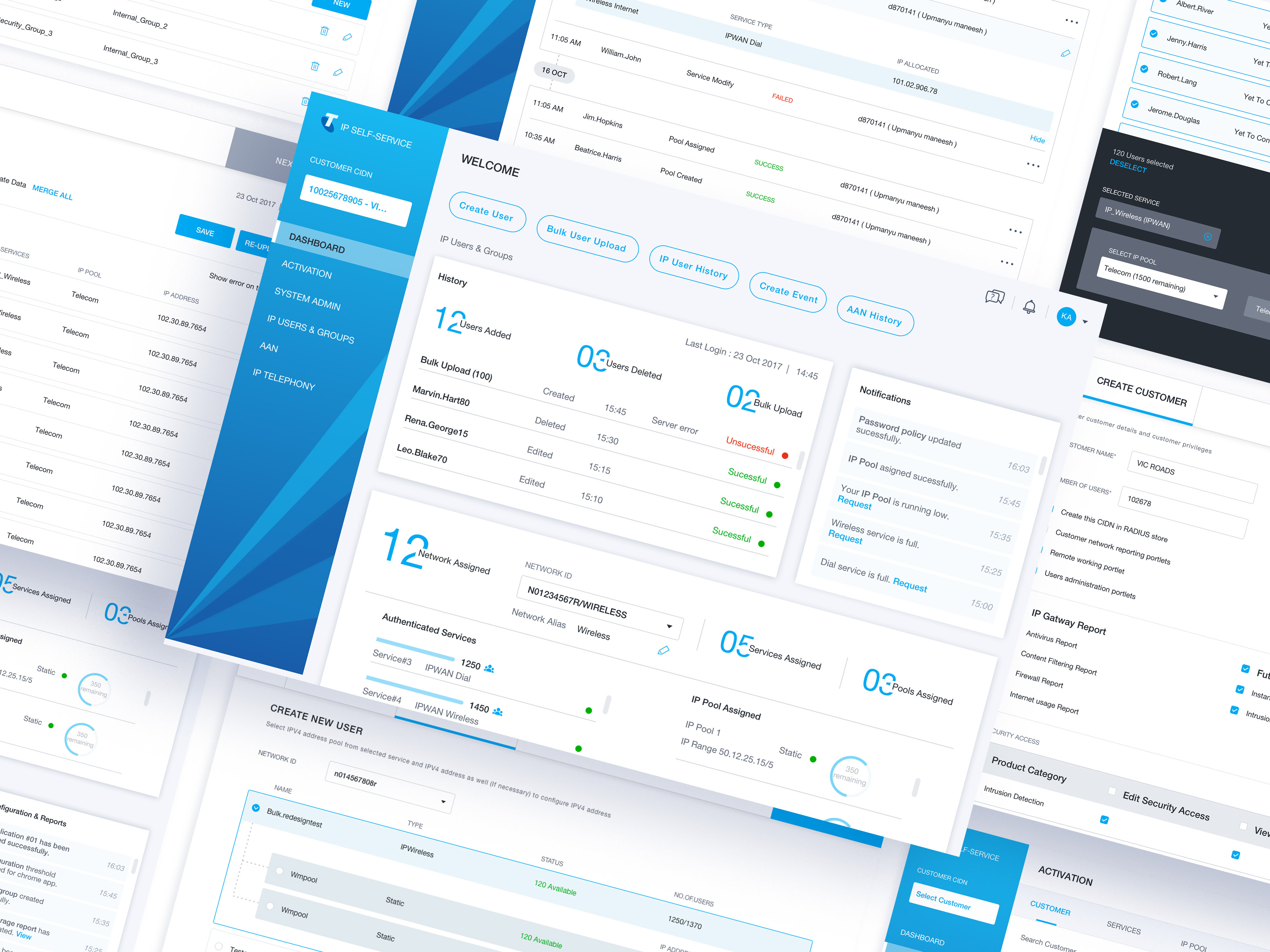Changing B2B customer service paradigm.
Client
Telstra
Industry
Telecom and Network
Duration & Location
6 Months | Melbourne, AUS
Role
Experience Design Lead
Capabilities
Research
Service Design
UX Design
Telstra is one of the largest telecommunications companies in Australia with a large B2B clientele. As such, Telstra enjoyed steady, long-term client patronage but its business customer satisfaction scores were not improving.
IPSS(Internet Protocol Self Service), Telstra’s self service portal for its enterprise customers, currently is a Monolithic system and rendered “unfit for the purpose.” The utilisation of Telstra IP services and its self serve ability has high impact due to the nature of businesses it caters to, like road safety and public service monitoring.
Its technology shortcomings and near absent user experience is leading to increasing frustration both for the customers and Telstra. The need was to to reimagine the way customers can experience self serve and Telstra’s way of service delivery to its enterprise customers.
We collaborated with Telstra to focus on B2B customers and their service channels to change the frustration into delight! While working very closely with the Telstra team, we researched their customers’ challenges, frustrations, needs, and desires. We identified interventions in product design, service offering, and portal interactions. We worked with the various business and IT groups to enable a new design that is focused on the future of B2B for Telstra.
What makes the engagement remarkable? We demonstrated the power of design-led approach to solve business challenges, helped Telstra create a balanced solution for the real world, and perhaps most importantly - opened channels of communication with Telstra’s user base that continue to pay dividends to our client.
01
Pre-Project Foundation
Early Discovery & Alignment of Scope and Plan
We started by understanding current scenarios, business challenges, technology challenges, portal challenges & identified key goals for Telstra to pursue and re-define Self Serve of the Future. We also created the research and presented to the stakeholder for expectation alignment. We completed the 2 week PPF phase with following outcomes -
- Knowledge Transfer & Domain Understanding
- Research plan alignment
- Client ecosystem access
- Directional themes

02
Discovery
Interviews and System Study
Telstra IP Self Serve Portal is used by 5000+ customers across Australia. As part of our research we reached out to 8 different customers of Telstra to understand their workflow, pain-points, needs, and expectations. We conducted stakeholder discussions with different business teams to understand their roles, contribution, and expectations from the self-serve system. We also attended sessions organised by the IT team to understand the current system flow, functionalities, and critical gaps.




03
Future Vision
Research Synthesis
We created the present journey by mapping all the scenarios, key momemnts & activities, and identified the key challenges discovered from the research phase. Based on our discussions with business and IT stakeholders we identified all the key roles and created a Stakeholder Map to define future roles for key stakeholders interacting or on the platform.


Experience Principles & Delivery Roadmap
We defined principles to guide the experience design of the portal. We described each principle and validated them with the users by giving them relevant scenario and use-cases. We used the research insights to prioritise the scope into 2 MVP's and 8 Design Sprints.

04
Design Sprints
Future Mico-Journeys*
We created future customer journeys for each sprints. The micro-journeys depicts activites and actions performed by the users to complete the tasks/services. Post journeys creation, we conduct validation workshops with users and stakeholder to validate the new processes. These micro journeys forms the basis for user story creation and design realisation of the sprints.
Roles

Information Architecture
We used our underdtanding of current system and mico-journeys to create the Infoamtion architecture and task-flows for each sprints. The task and information-flows forms the guiding light for the layout and detail designs.

Design Explorations
We explored different layout, navigation, and interacitions pattern to create whiteboardwireframes. These exploration were further refined to create papaer protottypes that were used to get early feedback from the users and development teams.

Detail Designs
We took inspiration from industry best practice and Telstra systems to create interaction concepts for the platform. Based on the interaction concepts and telstra branding guidelines we created the detailed design for all the scrnarios and use cases identified for the sprints.


- 60% self-serve capability increase. Hence reduction in cost of service.
- Seamless B2B transactions across 5000 global customers.
- Improved customer relationships, 40% jump in NPS score.



